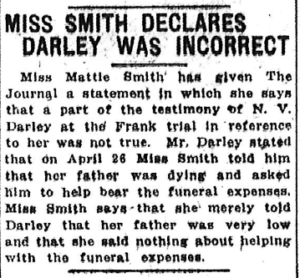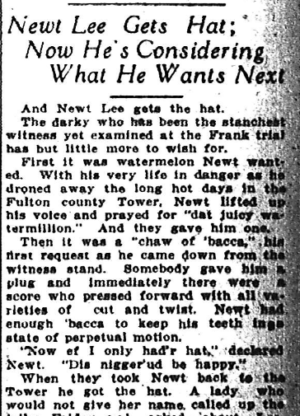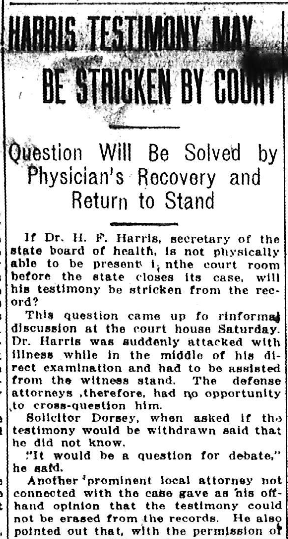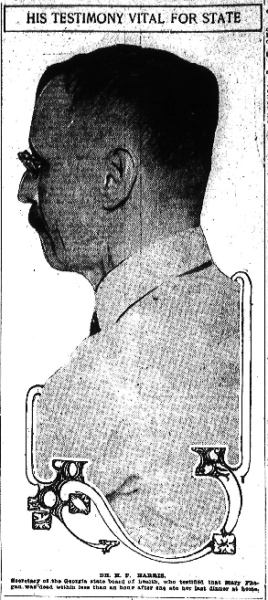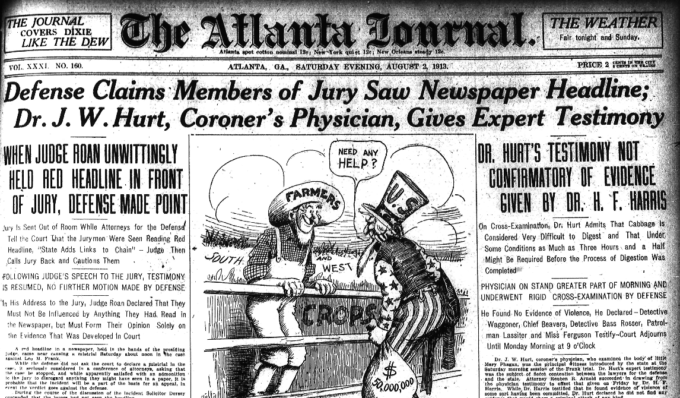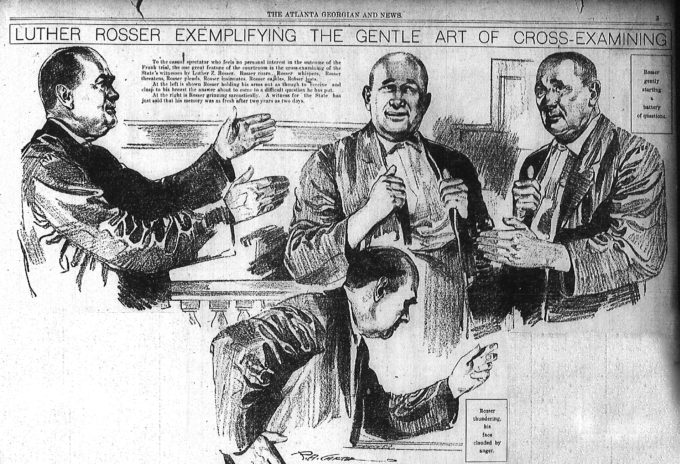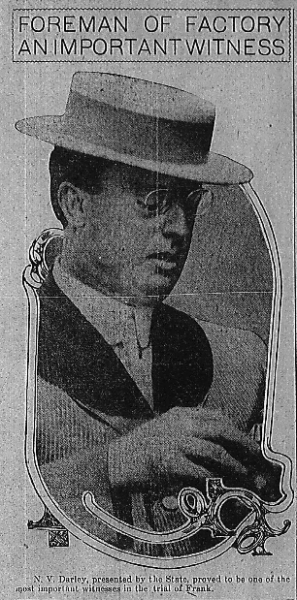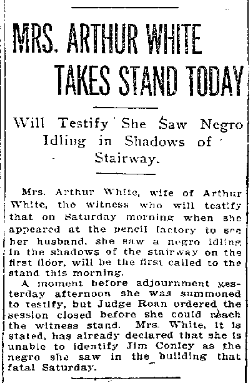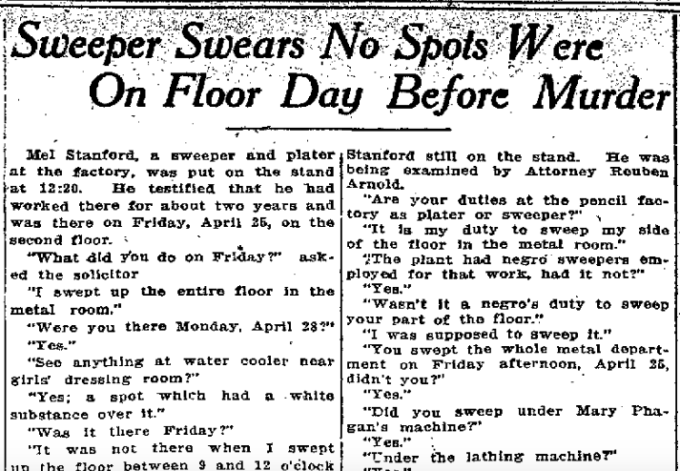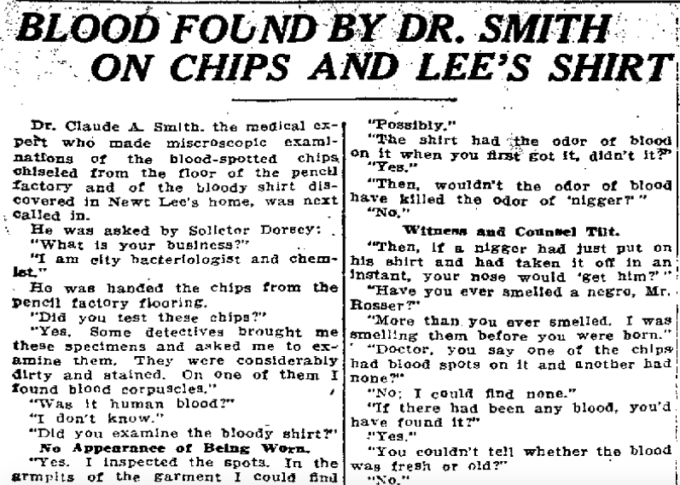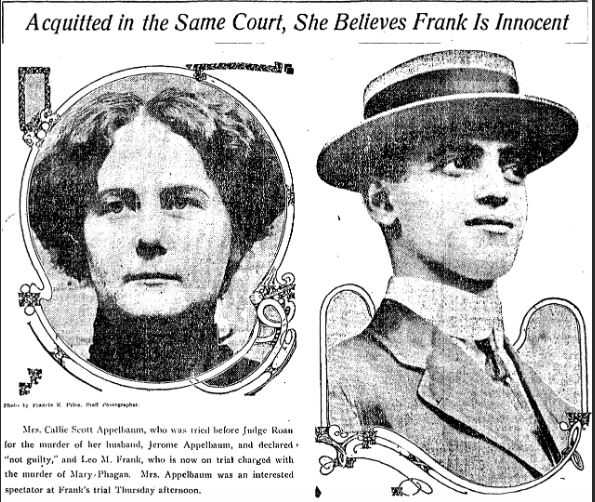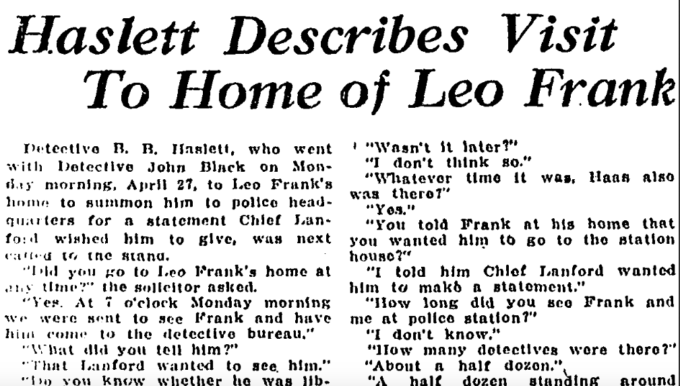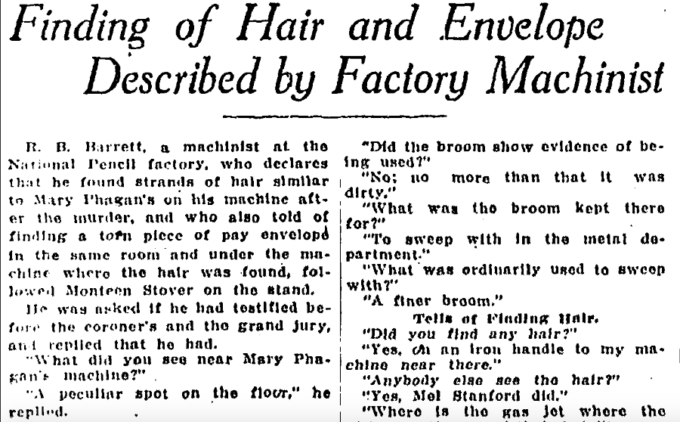Another in our series of new transcriptions of contemporary articles on the Leo Frank case.
Atlanta Journal
August 2nd, 1913
Members of Frank Jury Can Not Communicate With Members of Family and Can Read No Newspapers, Not Even Baseball
How does it feel to be shut up with eleven other men for one week, maybe two, possibly three? How does it feel to be the midst of a city and not of it, quarantined from the wife and children just a few blocks away, from business, from let[t]ers, from newspapers, from everything except six hours of daily testimony on a murder case?
Nobody knows except the Frank jurymen, and they can’t tell you, for you won’t be allowed to talk to ’em.
For five days and five nights their only companionship has been each other, all they had to do was eat and sleep and hear testimony. And by this time, they are probably worrying.
Continue Reading →


